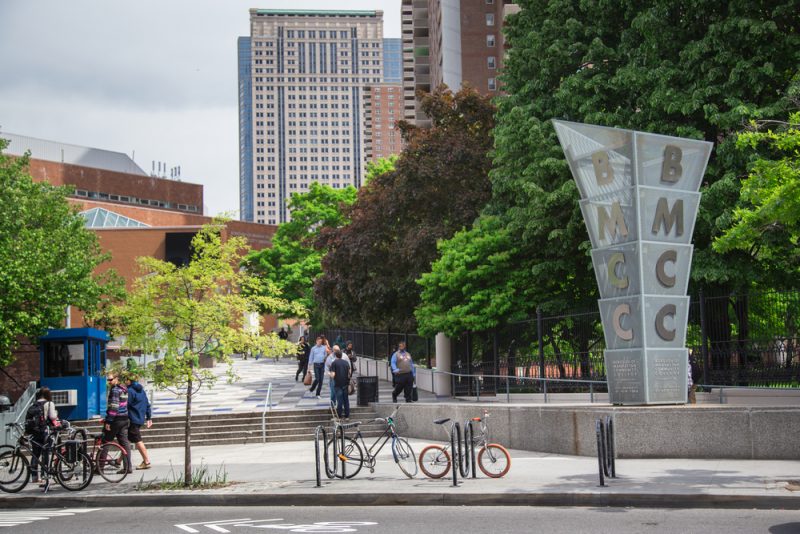New York Power Authority installs Manhattan’s largest solar array on public building

The Borough of Manhattan Community College (BMCC) recently became Manhattan’s largest public photovoltaic facility, and permits are pending for onsite solar power storage in two 100-kilowatt-hour batteries.
Workers from the New York Power Authority (NYPA) installed 947 solar panels on a vertical cooling tower enclosure and flat lower roof of BMCC’s main building, which spans four blocks.
“Borough of Manhattan Community College has really stepped up to the plate when it comes to investing in alternative energy resources and advancing clean energy technologies,” Gil Quiniones, the president and CEO of NYPA, said. “NYPA is pleased to have led the implementation of this latest major energy-saving project, which will help New York State continue to be a leader in energy efficiency and meet Gov. Cuomo’s ambitious goal to supply 50 percent of its electricity from renewable sources by 2030.”
The solar array is expected to generate 1,000-kilowatt hours of electricity per day. That will save the facility $42,000 per year in energy savings and reduce carbon emissions by the equivalent of 25,000 gallons of gasoline.
“We’re are leading the charge to utilize cleaner and greener energy that also saves on costs,” G. Scott Anderson, the vice president of administration and planning at BMCC, said. “What we’ve done at BMCC is use the pre-existing resources we’ve been given — in this case using our extremely long roof — to help us be more energy efficient. Our partnership with NYPA simplified the process and helped ensure that we met our strategic energy and environmental goals.”
The solar array was first proposed in 2008. Advancements in solar panel technology and installation of a new roof with four inches of R-25 insulation helped make it a reality.
“BMCC has been in the forefront of energy conservation and sustainability from insulating and greening its roofs, putting LED lights and motion sensors in its classrooms and public spaces, installing hydration stations in the hallways, and using thermal blankets and steam traps around its pipes,” Thomas Ching, the chief administrative superintendent, said.
BMMC has cut its energy uses by 19.6 percent since 2012, according to New York City Department of Citywide Administrative Services data, which overseas BMCC’s energy usage.
“Even with increasing enrollment and the attendant energy demands,” Ching added. “BMCC continues to find new ways to conserve energy with the solar panels being the latest energy-efficient practice in our sustainability repertory.”
